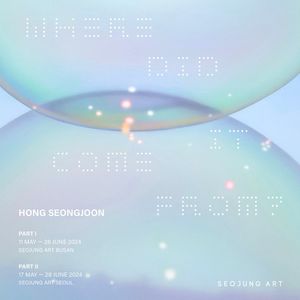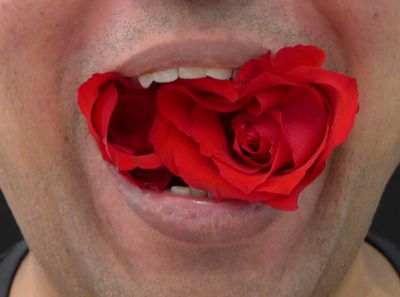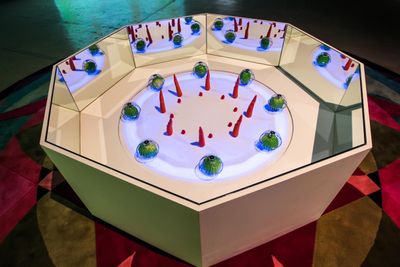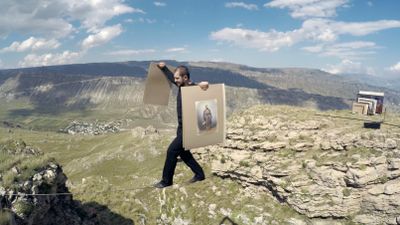An introduction to FIELD MEETING Take 5: Thinking Projects, New York
When living at a pivotal moment in history where declining political, economic and environmental conditions mean that the planet could meet its demise more possibly through human mal-activities than extraterrestrial cosmic, or planetary shifts, it is no small occasion for hundreds of US and Asia based artists and arts professionals to gather to deliberate on art and the state of the world at the 5th iteration of FIELD MEETING, Asia Contemporary Art Week's (ACAW) annual signature forum in New York, hosted by ACAW Consortium Partners Asia Society and SVA MA Curatorial Practice (SVA Theatre).
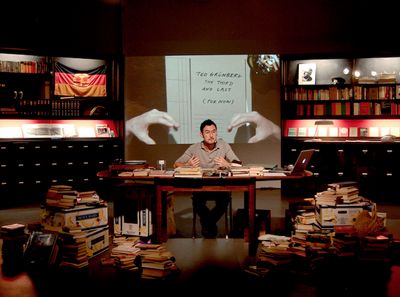
Simon Fujiwara, The Personal Effects of Theo Grünberg (2010). Mixed media installation, performance. Courtesy Hamburger Kunsthalle. Photo: © Yun Lee.
This same planet contains an art world that is more globally connected than ever; with artists passionately pursuing an endless array of projects across localities and regions that ultimately define the parameters of their personal and professional biographies. Yet when the United States, self-entitled 'leader of the free world,' declares a travel ban against six majority Muslim countries while intimating entry-denials to dozens of other nationalities in the guise of a 'project of national security,' it urgently calls for a deciphering of the term 'project' and its more soberly usage in the world today. Not only have such regulations directly impacted ACAW's mission as an organisation and the work of all our collaborators worldwide, it is also impossible to ignore the surmounting effects of the Trump administration's curtailing policies across all sectors of knowledge, humanities, philanthropy, and activism.
Conceived in 2014 as an exhibition and presented in the format of a forum that emulates the experience of a studio visit on a communal scale, FIELD MEETING explores art as a journey of ideas intrinsically connected to life beyond art for art's sake notions, through a timely staging of extraordinary people, their creative process, research and activities.
Each FIELD MEETING forum takes one quintessentially common term within the contemporary art-world lexicon as an entry point for thinking more consciously together as a collective in an effort to cut through the semantics of language and ideological entanglements for deeper understanding of such terms and their predications. Through the distinctive nuanced thinking of the invited artists, curators, and other arts professionals, new reflections and perspectives that are inclusive of the thinking of other disciplines and people are generated. It is an attempt towards an inclusive thinking; one that explicitly seeks to consider multiple contexts and a wide range of cultural, political, historical, psychological, spiritual, phenomenological and philosophical specificities.
FIELD MEETING 2015 delved into 'performance,' while in 2016 we contemplated the word 'practice.' In 2017, in an attempt to deconstruct the term 'project' in the life of artists and arts professionals, FIELD MEETING presentations traverse between disciplines of visual arts, art history, science, social history, philosophy, architecture, mythology, film, folklore, subculture, medicine and self-development, to reflect on a variety of significant and timely topics including feminism as ecological consciousness; Lenin's rendezvous with Jesus; telepathic animal communication; links between Chinese ink painting and global warming; cosmic speculation; the transformation of ancient symbols in the digital age, and much more.
The Culture of Status and The Status of Culture
Within the current climates of regional destabilisations, religious profiling, war-mongering, and escalating deterioration of our natural environments, how can artistic communities contribute positively to the world while keeping the integrity of their own humanity and work intact? The connection between cities, their inhabitants, culture, urban development, class, gender and education are examined in the first section of FIELD MEETING on day-one, with emerging curator Hera Chan's (Hong Kong) dramatic reading of a political theatre script referencing traditions of pageantry and street theatre in Hong Kong and factory plays in Mainland China. Suhanya Raffel, executive director of M+ museum (planned to open in 2019) in Hong Kong, asks how a city that has spawned a spectacular architectural skyline, renowned film, fashion and design industries, and the third largest global art market, could bring a unique and necessary voice to the international museum world, while editor of WTD Magazine Meitha Al Mazrooei (Dubai) traces the cultural and physical evolution of the United Arab Emirates to examine how specific languages of design, art and development manifest in the periphery. On that note, writer and founding editor of e-flux journal Brian Kuan Wood (New York) delivers a hypnotic narration of his latest fictional story: 'The Story of Peter Green Peter Chang' which among many other things addresses the role of creative industries in manufacturing historical accountability—namely the revival of collective wounds for dissemination of new status and identity to groups of people previously considered disempowered.
1984 in Disguise: The Project of Resistance
If works by creative individuals are interpreted as 'projects,' what are their functions in society? Are they merely passive intellectual investigations, or do they actively contest the daunting multiplicity of paradoxes spawned by the prevailing right-winged and democratically masked authoritarian governments worldwide? Performances, lecture performances, and discussions tackling themes of repression, censorship, violence, and social and environmental depletion in many sectors of Asia and the United States include artist Dai Guangyu's (Beijing) seminal ink-based performance The Failure of Defense—America (2017), which shifts from its original focus on class and ideological divisions in China to forces that threaten the American nation. Abdullah M.I. Syed's (Karachi & Sydney) performance Flesh and Blood uses the rose, an important element in celebratory and burial ceremonies in South Asian cultures, to directly reflect on the current state of demonisation of Islam in America; while Hu Weiyi's (Shanghai) uses the human body as a canvas for projecting dilemmas of facing a world that demands constant processing of information against our will. Artist Nadiah Bamadhaj (Jogjakarta) attempts what many in her local community would consider a taboo, while Philip Tinari (Beijing), having freshly dealt with external pressures that caused the removal of select artworks out of a major China-focused exhibition he co-curated at the Guggenheim Museum, presents a series of cases to demonstrate how China has pioneered a type of censorship that works by stealth.
Evolution and The Fountain of Fulfillment
Can turning the finger inward towards our self as perceiver, creator, and narrator of our everyday experiences affect the larger mechanisms of events in the world and the universe? Presenters in this section consider aesthetics, science, medicine and physical dimensionality as the apparatus for awareness and communication with everything (living and non-living) on a stratus of consciousness that reaches far and wide beyond survival and gratification of personalities towards true evolution of humanity's inner world that corresponds with the laws and physics of nature and the universe.
Joyce Ho's (Taipei) intimate performance is choreographed to regulate 'time' as a clue and magnifier of the subtle rituals often overlooked in our daily lives. In his lecture-performance Kingsley Ng (Hong Kong) considers concepts of traditional Chinese medicine, namely acupuncture, to ask if art can also weave through the meridians of our social and ecological fabrics. In his lecture-performance Cosmic Physics Adrian Wong (Los Angeles & Hong Kong) shares anecdotes from his forays with a small army of Feng Shui practitioners, geomancers, energy manipulators, sound healers, and telepathic animal communicators, while music producer Junod Etienne discusses how self-observation and seeing ourselves as the project can positively affect our energy, perception, and growth.
The Lived, Living, Speaking Story
Across art historical horizons, wide-ranging multidisciplinary research is increasingly instrumental in retrieving marginalised or forgotten narratives. Yet, do not such distributions of formerly hermetic knowledge painstakingly excavated by independent practitioners also play into the ever-capitalist consumerist fervour; paving way for quick à-la-mode institutional appropriations that ultimately feed the voracious appetites of the art market?
In his opening remarks, director of SVA MA Curatorial Practice Steven Henry Madoff shares the importance of reflecting the diversity of New York City's many art worlds in a programme he established to engage and support curatorial and art historical work from a worldly perspective. Nancy Adajania (Bombay) in her keynote lecture provides a glimpse into the research process of her recent book on the Indian artist Navjot Altaf where she recalibrated the received histories of Marxism, feminism and collaborative art, in addition to producing regionally inflected vocabularies and histories that do not appear as mere footnotes to western art history. Laura Barlow (Doha) initiates a process of mapping the works of the trailblazing Lebanese artist Saloua Raouda Choucair (1916–2017) as an expanded sculptural, architectural, and design practice within the scope of international modernism. Yuliya Sorokina (Almaty) discusses the triumphs and challenges of establishing and maintaining a digital archive dedicated to the legacy of Central Asian artists who have by now become internationally well-known yet remain unrecognised in their own countries and regions. Tiffany Chung (Ho Chi Minh City & Houston) revisits history to confront the slippages between past colonial rhetoric with the present moment's neo-liberal reforms in the traumatised continents of Asia, Africa as well as the Middle East.
The Good, The Bad, and The Desirable: The Myth of Truth and the Auxiliary of Perspective
Delving into the nuances of multidisciplinary research taken by practitioners within their everyday individual practices embodied through their own voice and presence, this year's FIELD MEETING once again expresses the great flux of often-overlooked programmatic achievements and institutional efforts forwarded by the drive of individual artists and arts professionals' projects across many regions of the world. In this context, on the occasion of Asia Contemporary Art Week, we must also ask where is Asia today, if not everywhere, in all places all at once? How do those of us with geographical links to Asia living in other continents occupy it as a conceptual space beyond identity politics? Moreover, as artists and arts professionals, how do we responsibly criticise institutional status quo without neglecting our own contributions towards the working mechanism of the state of such status quo?
Hajra Waheed (Montreal) translates elements of her collage practice into a shadow play that demonstrates the ever-growing need to hold everything dear, should it become collateral damage to the unforeseen events of the near future. Marwa Arsanios (Beirut) considers ideological theories and practices of different domestic labour organisations, eco-feminist, and autonomous women's movements in the Middle East and elsewhere. Bruce Quek (Singapore) examines light pollution and the limits of empathy imposed by informational overload. Yin-Ju Chen (Taipei) offers her extra-stellar evaluations deducted from an expedition to California's Mt. Shasta in search of the lost civilisation of 'Lemuria.'
In his keynote lecture-performance artist Simon Fujiwara (Berlin) takes us on a tour of his most ambitious project to-date: a full-scale replica of Anne Frank's house as an investigation of ideologies that underpin the hyper-capitalist logic of the 21st century. Marat Raiymkulov's (Bishkek) innovative monologue play voices the artist's conjoined philosophical reactions living through multiple political revolutions, after the collapse of the Soviet era, and the space of time when Lenin's house of Culture became the church of Jesus Christ. Taus Makhacheva (Makhachkala & Moscow) provokes lively ruminations about menus derived from histories of starvation; puzzling cutlery accompanying dishes from two different sides of a war, hidden lollipop shapes in Lenin's head, and many other objects of desire to explore complex relationships between history, politics of memory, and contemporary life.
FIELD MEETING is an exercise in prioritising the practice of an artist as the foremost ingredient for contemplation and development; a curatorial engagement with ongoing artistic processes, rather than finished art works, to confront issues that affect the contemporary art field at-large, while aiming to broadly present Asia as a conceptual space that transcends geography.
Considering contemporary art in its present tense and highlighting current as well as historically significant initiatives, the forum exposes compelling creative practices in a timelier, less mediated fashion to spark lasting relationships between artists, art professionals and organisations in the United States and Asia to transcend established institutional representation and discourse with greater nuance, while addressing the gaps in the ratio of Asia-based artists represented in the US. FIELD MEETING programme therefore unearths the recent past, acknowledges the present moment we are in, and envisions an optimistic future for this ever-evolving field.—[O]
—
An annual signature program of Asia Contemporary Art Week, FIELD MEETING Take 5: Thinking Projects is a two-day exclusive forum for arts professionals dedicated to newly conceived performances, lecture-performances, and lively discussions by over 25 compelling figures, hosted at the Asia Society Museum & SVA Theatre, New York on 14/ 15 October 2017
Curated by ACAW Director Leeza Ahmady, with performances and lecture-performances by:Nancy Adajania (Bombay) / Meitha Al Mazrooei (Dubai & New York) / Marwa Arsanios (Beirut) / Nadiah Bamadhaj (Jogjiakarta) / Laura Barlow (Doha) / Hera Chan (Hong Kong) / Yin-Ju Chen (Taipei) / Tiffany Chung (Ho Chi Minh City) / Dai Guangyu (Beijing) / Simon Fujiwara (Berlin) / Joyce Ho (Taipei) / Hu Weiyi (Shanghai) / Taus Makhacheva (Makhachkala & Moscow) / Kingsley Ng (Hong Kong) / Bruce Quek (Singapore) / Suhanya Raffel (Hong Kong) / Marat Raiymkulov (Bishkek) / Abdullah M.I. Syed (Karachi & Sydney) / Philip Tinari (Beijing) / Hajra Waheed (Montreal) / Adrian Wong (Hong Kong & Los Angeles) / Brian Kuan Wood (New York) among others
A schedule of FIELD MEETING Take 5 can be found here.

